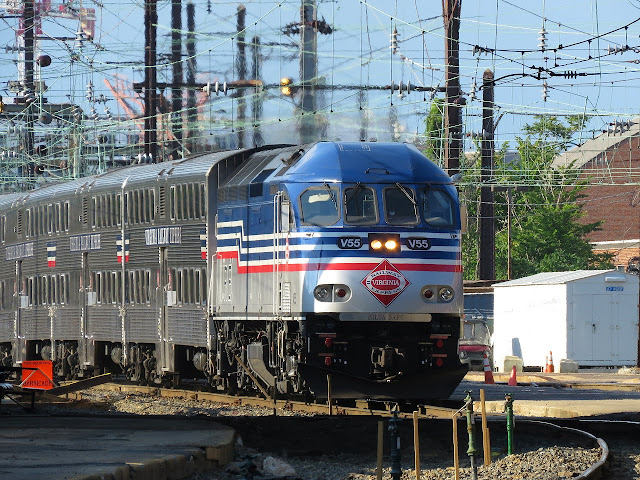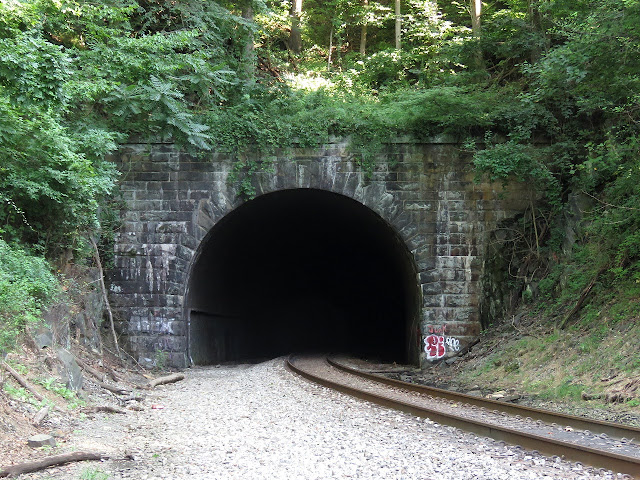Here is Part 2 of my June 2020 trip to Georgia via a sleeping accommodation on Amtrak's Crescent. Due to the pandemic I wasn't inclined to travel either on an aircraft or passenger rail coach, however a sleeping car roomette provided the perfect amount of isolation for a safe trip. Part 1 covered the video clips I captured at Washington DC's Union Station and Gainesville, GA. This part will cover all the still photos from the same locations as the rear placement of the baggage car precluded most photos en-route. The complete gallery can be found here ( mirror ).
I started my journey at the Halethorpe MARC station. Because LD trains don't stop at the BWi Airport Rail Station my choices were going down to Union Station or waiting at Baltimore Penn. I chose Baltimore as it would ensure platform access to observe the power change. At Halethorpe, Construction on tracks 1 and A required use of track bridges and special platform gondola cars for passengers to access track #2. Amtrak MP15D #573 was hanging out south of the platform cars, probably to pull them away for the night's work.
A southbound MARC trainset with diesel MP36PH-3C #27 arrived first, just before my northbound train with HHP-8 #4913
The burly HHP-8's were out in force that day because MARC was running longer trainsets to facilitate social distancing. Here is #4912 departing Baltimore Penn Station.
Due to reduced service and poor connection times I had to wait 2 hours in a deserted Baltimore Penn for my Southbound Crescent Train #19, which arrived behind ACS-86 #605.
#605 again, this time at Union Station.
The VRE equipment, including MP36PH-3C #V55 and cab car #V717, was all looking pretty factory fresh.
Also caught Amtrak SW1200 #796 towing a Regional trainset back to Ivy City.
As I departed along the Virginia Ave corridor a storm was descending over the Capitol complex in an apt metaphor for the times.





























